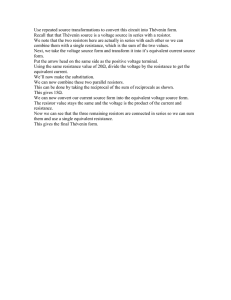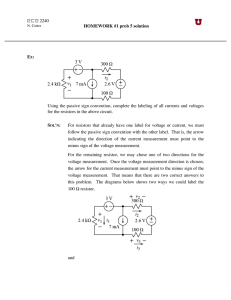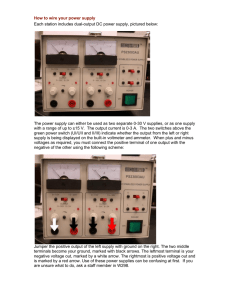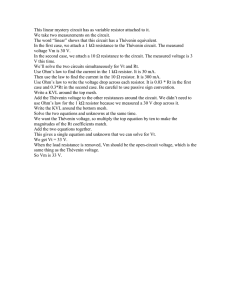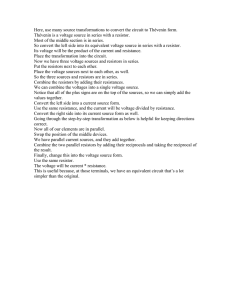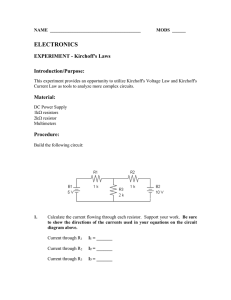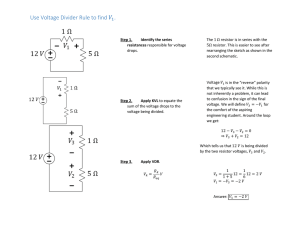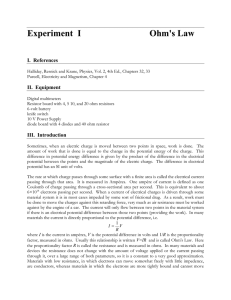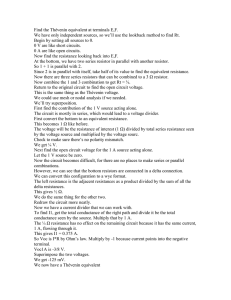Use many source transformations to find this circuit’s Thévenin form.
advertisement
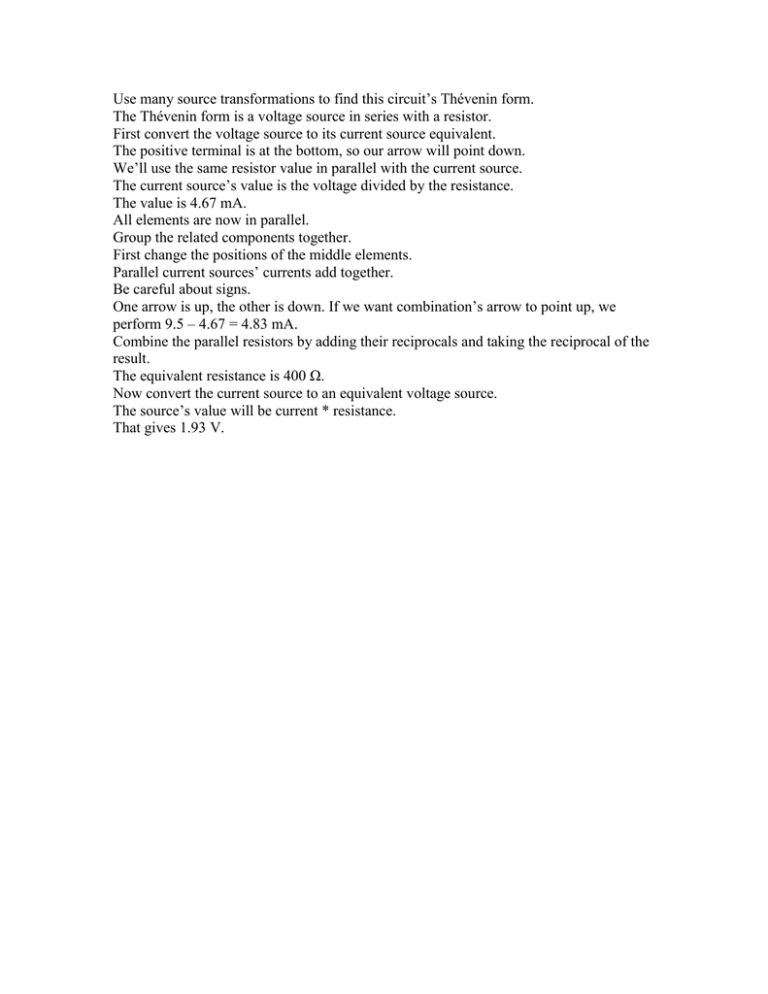
Use many source transformations to find this circuit’s Thévenin form. The Thévenin form is a voltage source in series with a resistor. First convert the voltage source to its current source equivalent. The positive terminal is at the bottom, so our arrow will point down. We’ll use the same resistor value in parallel with the current source. The current source’s value is the voltage divided by the resistance. The value is 4.67 mA. All elements are now in parallel. Group the related components together. First change the positions of the middle elements. Parallel current sources’ currents add together. Be careful about signs. One arrow is up, the other is down. If we want combination’s arrow to point up, we perform 9.5 – 4.67 = 4.83 mA. Combine the parallel resistors by adding their reciprocals and taking the reciprocal of the result. The equivalent resistance is 400 Ω. Now convert the current source to an equivalent voltage source. The source’s value will be current * resistance. That gives 1.93 V.
